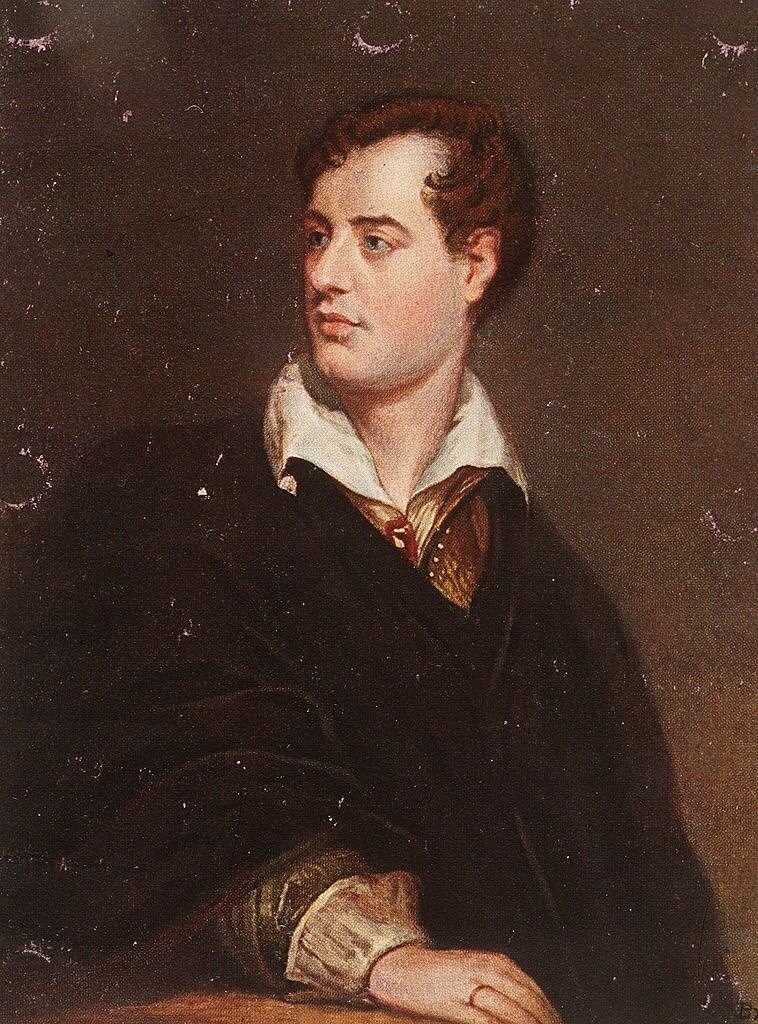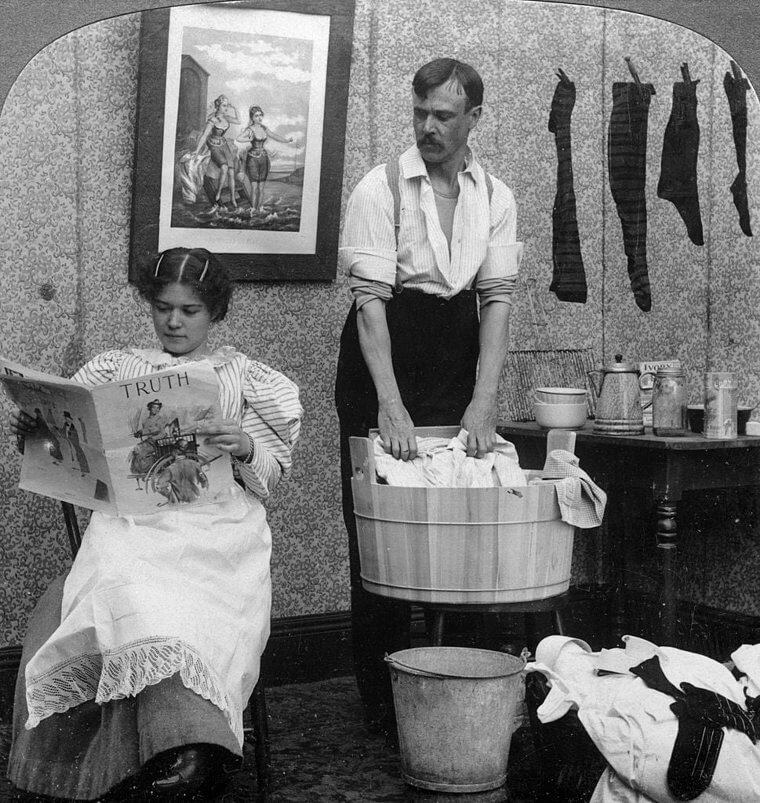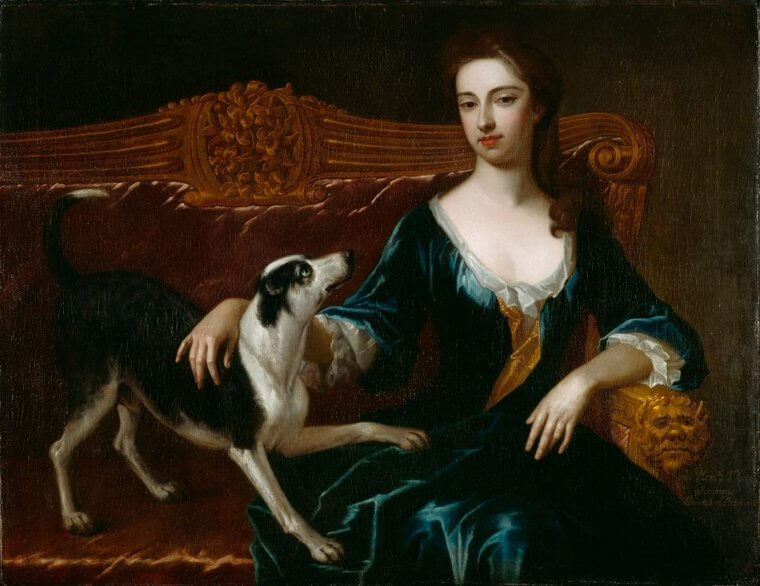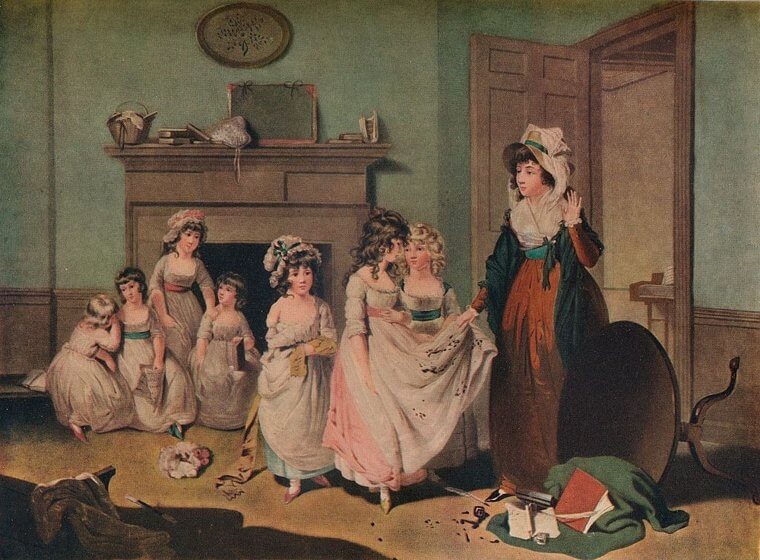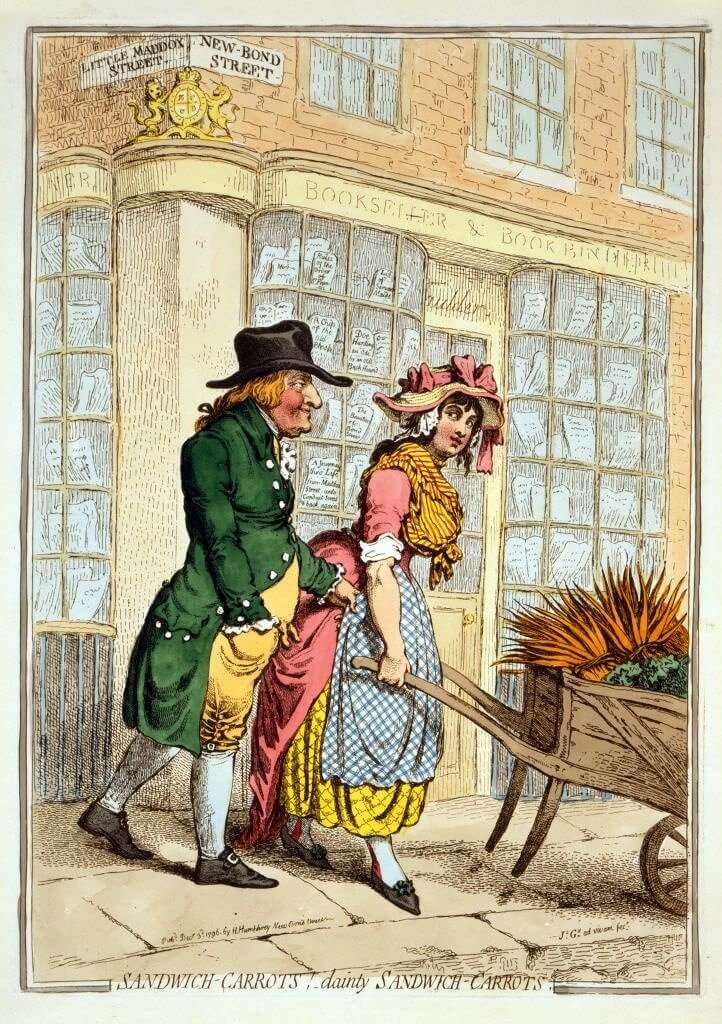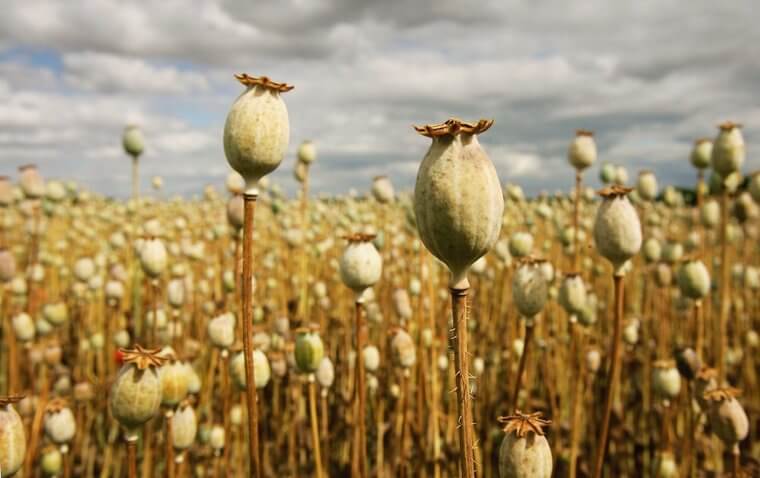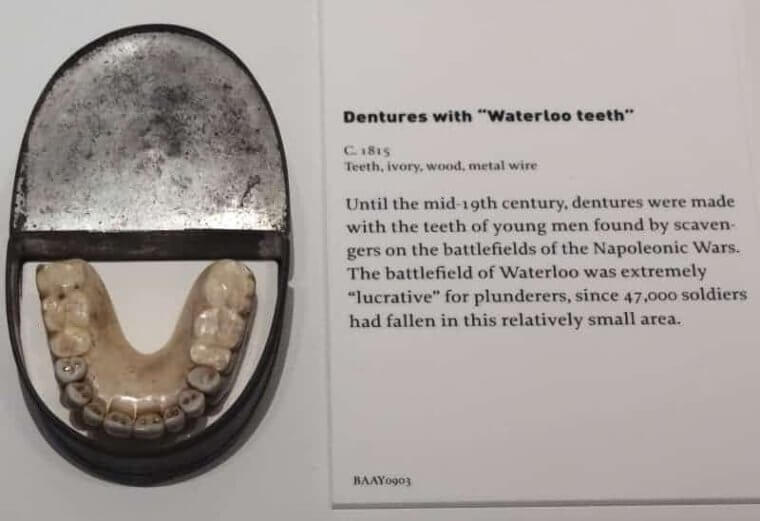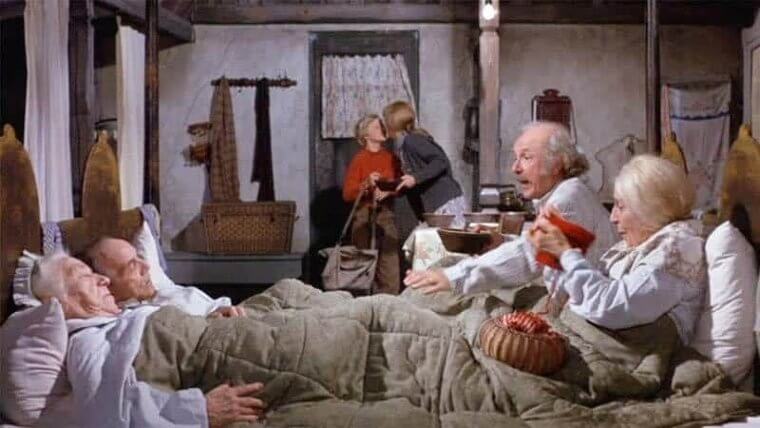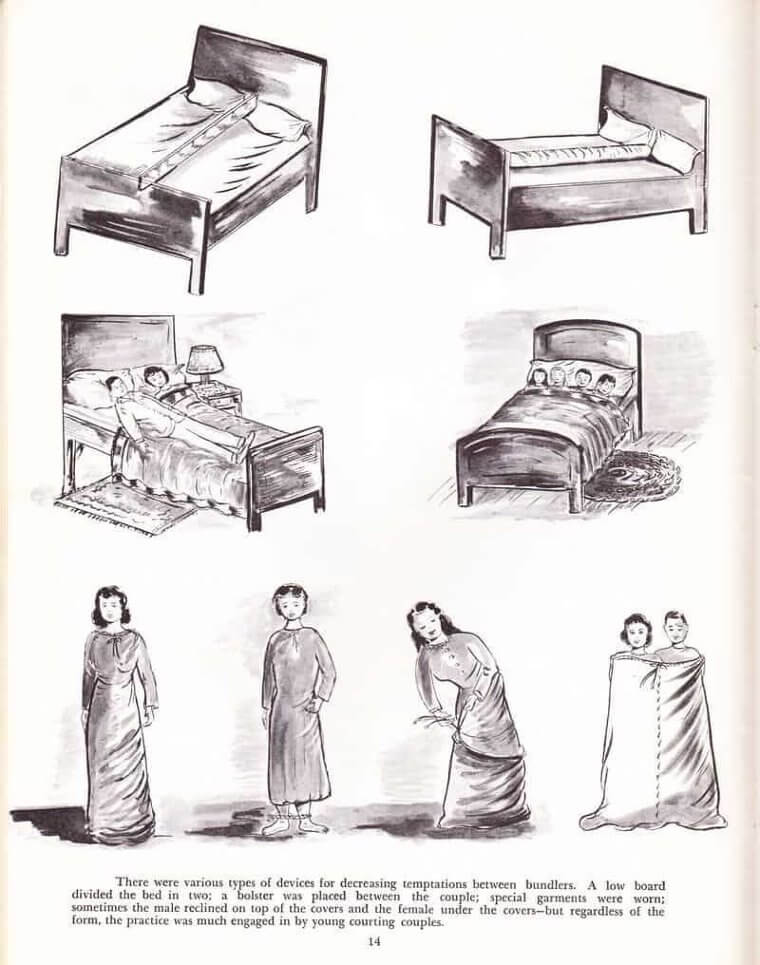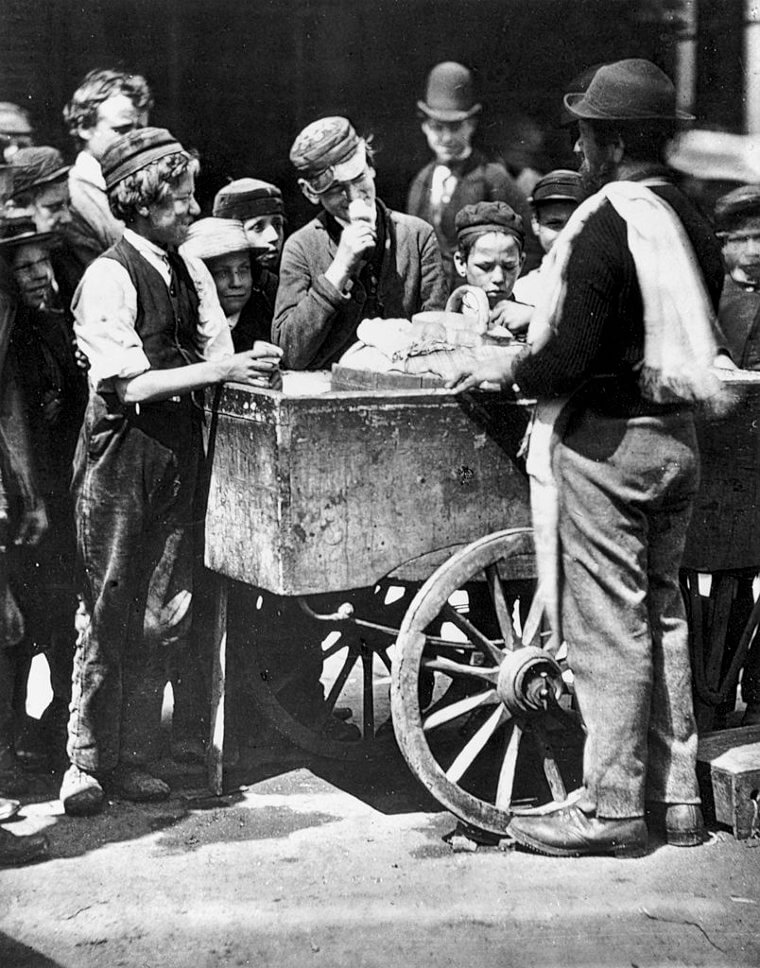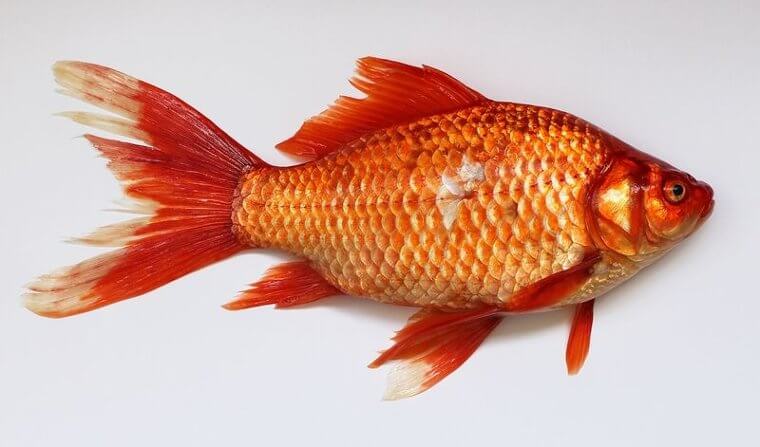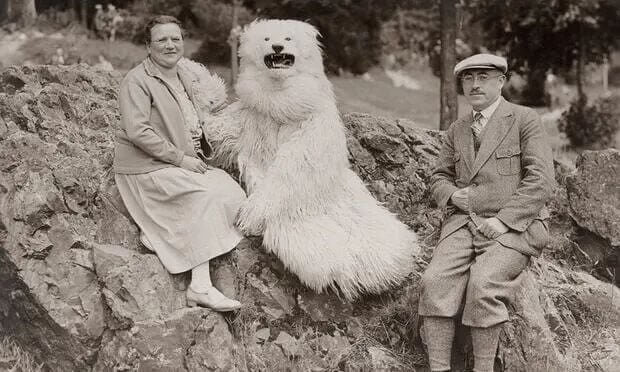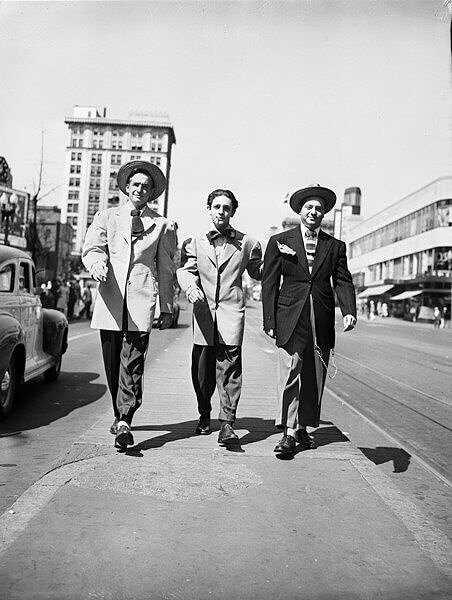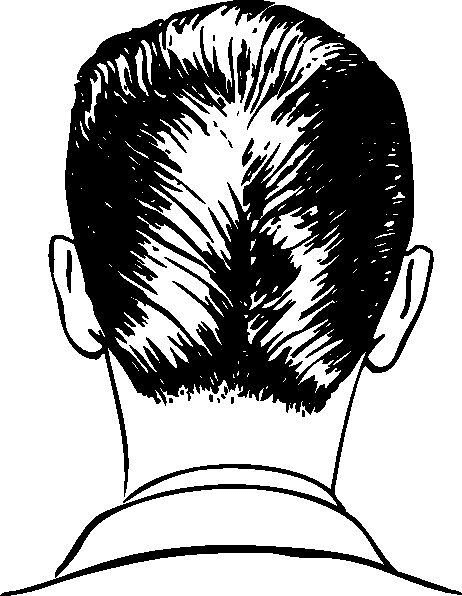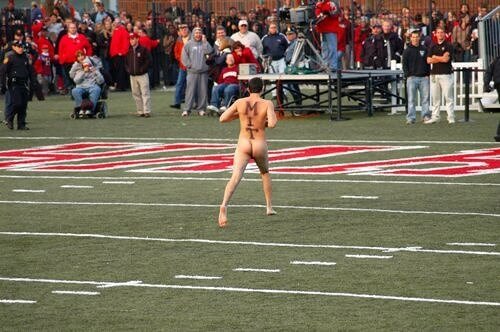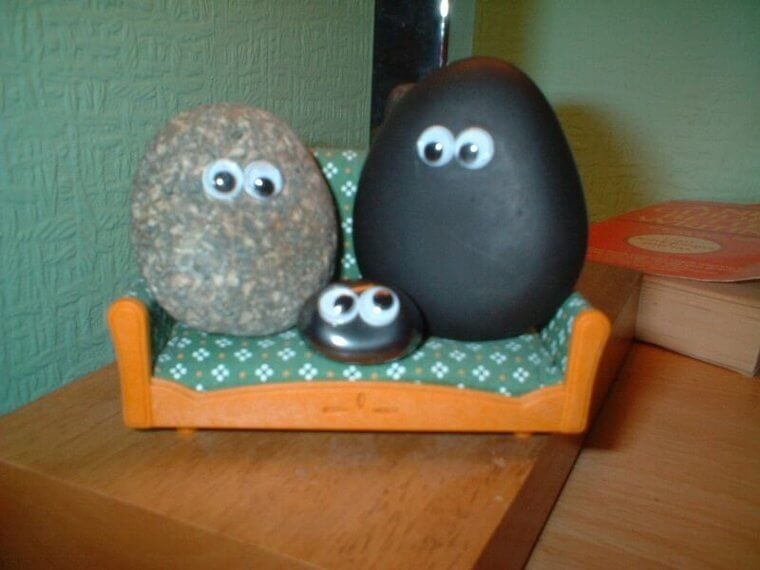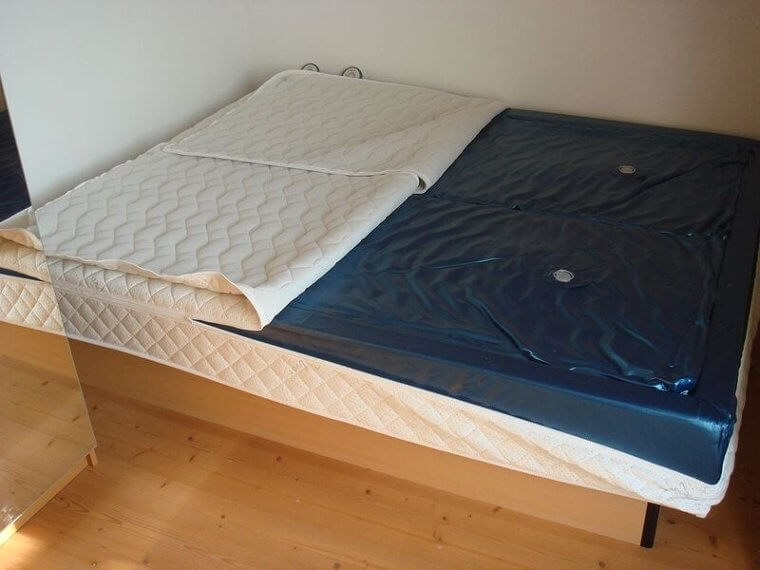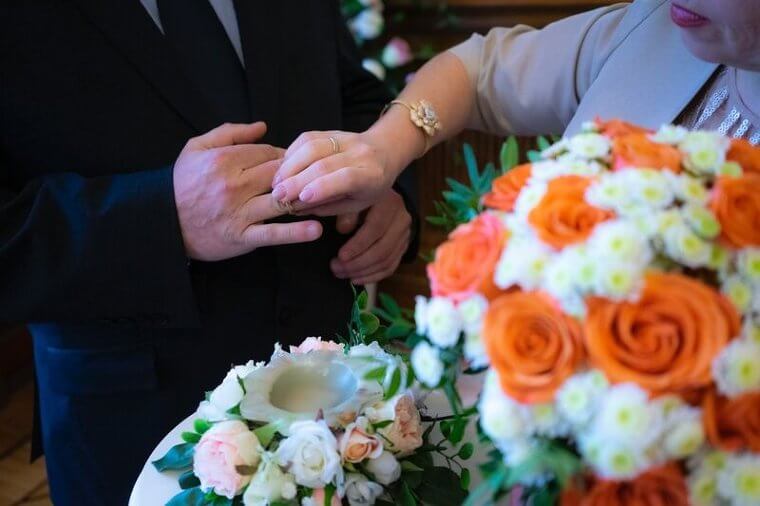Sometimes describes as one of the most elegant periods in history, the Regency Period, with all its aristocratic tendencies and elegant ladies and gentleman, was actually pretty horrendous at times. Begins the fancy dresses and elegant tophats, lay some of the most disgusting and inhumane habits and behavior you probably ever heard of. Here are some of the most surprising and scandalous habits of the Regency period.
Women Went Commando
Fashion changed dramatically during the Regency era. Gone were the frilly and complicated gowns which required a team to assemble. In their place were empire-waisted dresses made from simpler fabrics which were ultimately more comfortable and more affordable.
With the simpler gowns also came simpler undergarments. That’s right, the women of the Regency era often only wore a chemise-type slip under their empire-waisted gowns. Actual underwear was considered controversial because of the similarity between them and those the men wore so women avoided them and went commando instead. For such a modest era, it’s rather amusing that the undergarments, or lack thereof, would be considered risque today.
Their Children Were Mistreated
European parents in the 18th and 19th-century were were taught that until a child was old enough to speak rationally, they were considered a worthless burden. Others preached that young children were vessels of sin whose souls required cleansing. Because of these abhorrent beliefs, many upper and middle-class parents would outsource childcare until their young reached their teenage years.
Parents in the upper echelon of society were a bit kinder to their children. They would hire wet nurses or family acquaintances from a lower economic class to care for their children during their formative years. Impoverished families took a more drastic approach by locking their young children away in an attic or basement with only their basic needs until they were old enough to “contribute”.
Murder Scenes Were Entertainment
Following the bloodshed of the French Revolution, death became a cultural fascination for many in the Regency era. This morbid interest combined with the boredom that arose due to lack of entertainment sparked a new and somewhat macabre niche; murder tourism.
Because of their newfound morbid fascination, news of a murder would spread like wildfire throughout the city. Not only would the tourists flock to view the scene, but entrepreneurs also began auctioning off items that would today be viewed as evidence. Forensic science had not been introduced into law enforcement yet so the murder tourists were allowed to trample through the crime scene in hopes of finding a souvenir.
High Society Men Were Quite Vain
Throughout the centuries, the majority of the focus when it comes to fashion trends has been on women. Little has been said about the trends of men. Though we may assume that the men of the Regency era were not fashion-forward, in all actuality, there were some who paid particular attention to their appearance and were quite vain.
One trend-setter of the Regency era was male socialite, Beau Brummel. Always impeccably dressed, it was rumored that he spent five hours a day putting together his ensemble. Not only was he impeccably dressed but he was also a novice designer being the inventor of the starched cravat. Instead of merely shining his leather boots, he also washed them with champagne and refused to walk the grounds for fear of getting them muddy.
High-Society Men and Their Mistresses
The Regency era saw many men of the upper class having at least one mistress after marriage and numerous affairs prior. The mistresses were well taken care of and often spent more time with the men than their wives.
Military officers, for example, would often bring their mistresses to war with them and allow them to share their tents. It was an unspoken rule that these high society men provide financially for their mistresses, especially if they had children together. Should they turn their back on their responsibilities, the mistress would expose them in print, shaming them for their actions.
The Tongue of the Pig Was a Delicacy
Pork was the meat of choice for the middle and upper-class of the Regency era. What we would consider bi-product today were considered delicacies back then. The pig's pancreas was served as sweetmeats and the finest tables served the pig’s head whole. The most popular parties served finger foods so the dancing could continue throughout the evening. Their favorite and most decadent finger food? Chicken stuffed with pig’s tongue.
Beef also became popular during this era, however, its popularity was due to more of a political stance. Because it was unpopular meat by French standards, the British claimed beef was an unpretentious patriotic food that only they could appreciate. This political stance on food carried on the United States as well when they began to call hamburgers liberty steaks during World War I and french fries Freedom Fries during the Iraq war.
Everyday Household Items Were Deadly
Many don’t know that the everyday household items used at that time were also lethal. Arsenic was used in various concentrations to make paper, fabric, candles, and a miracle cure for various ailments called Fowler’s Solution.
When arsenic is ingested or inhaled by humans, it immediately begins to interfere with the body’s metabolic processes, with over-exposure eventually causing death from multi-organ failure. Being a Group-A carcinogen, even ingested levels that do not cause arsenic poisoning are likely to cause cancer. The arsenic compound potassium arsenite found in Fowler’s solution has been linked to cirrhosis of the liver, high blood pressure, skin cancer, and bladder cancer.
An Obese and Possibly Syphilitic Prince Regent
The Prince Regent was far from fit due to his deep love for food and drink. By mid-life, he had reached almost 300 pounds and had a 50-inch waist due to his typical diet of rich food and sugary alcohol. Though he was ridiculed by other dignitaries for his weight, he hired the first celebrity chef, Marie-Antoine Carême, to prepare his meals.
The Prince had a passion for women and though he was married to Caroline of Brunswick, he had many affairs, including a lifelong relationship with the widowed Maria Fitzherbert. It has also been rumored that the Prince frequented the brothels where he likely caught syphilis which led to his declining health. As he got older, his obesity and likely syphilitic infection got the better of him. To cope with the pain, he relied on vast quantities of the opiate laudanum.
A High-Class Mistress’s Tell-All
One of the most notorious of the high-class mistresses in Regency England was Harriette Wilson. After being denied financial support from numerous wealthy lovers she wrote a two-volume autobiography called The Memoirs of Harriette Wilson: Written by Herself. She used this platform to name and shame those who had left her high and dry.
Amongst those named was the Duke of Wellington, the foreign secretary, a slew of nobles, and the Prince Regent himself. Harriette Wilson was considered a courtesan and though she received financial support from multiple aristocratic men in exchange for a romantic affair, she was not deemed a prostitute. Courtesans were viewed as financially dependent long-term lovers so denying them support would leave them destitute. It was considered dishonorable to lapse in payment so when her lovers did, her book was justified.
Women Peed Into a Dish
With the layers of slips, dresses, and outerwear that comprised their ensemble, having a traditional pee on a toilet required assistance. The clever problem-solvers of the 18th century came up with an ulterior method to relieve themselves. Instead of disrobing, they used a bourdaloue which was a small vessel that resembled a gravy boat to do their business.
Made of porcelain or metal, the bourdaloue had a handle at one end and was curved so that they resembled the curvature of the female anatomy. Because water closets had not been introduced yet, women would duck behind a curtain or slip into a dark hallway to relieve themselves. If they were wealthy, they would have a maid on hand to empty the pot after use.
Cartoons Were Nearly Pornographic
While the songs of the Regency era skated on the barrier of being inappropriate, the cartoons produced at the time were full of raunchy and tawdry content. Because actual pornography had not been introduced to society, the cartoons allowed artists of the era to excite people’s imagination on multiple levels. Nothing was off-limits.
The illustrations depicted heterosexual couples, gay couples, interracial couples, and transvestites all engaging in oral, orgies, and traditional sexual positions. Artist Thomas Rowlandson was the most active and risque during this period of time with his work still being on display to this day. He was known for depicting scenes that would typically be deemed taboo such as bestiality, interracial sex acts, and voyeurism. He also became known for his political and satirical cartoons in which he pokes fun at not only society but also himself.
Opium Was Commonly Used
During the Regency era, opium was imported in mass quantities from Bengal to England to be used in various household medications. The most common of the opiate-based medications was laudanum which was a combination of opium and morphine. Doctors and apothecaries who had no formalized training in pharmaceuticals would prescribe laudanum for a number of ailments including colic and teething pain in infants and children.
Sadly, the physicians of the Regency era had no idea that opiates were addictive. The common use led to addiction and overdose just as it does today. Aside from Prince Regent, famous author and poet Samuel Taylor Coleridge also became addicted to opium after taking laudanum for a childhood fever. By the end of his life, he was taking two quarts of laudanum per week, his wife had left him, and his lifelong friendship with fellow poet William Wordsworth had dissolved.
Teeth Were Extracted From Dead Soldiers
The upper-class aristocrats lived off of diets that included rich food full of fat and sweet treats full of sugar. Dental hygiene was far from common so typically the wealthier you were, the more rotted your teeth. Though dental care was not common, vanity was so the dental industry was booming. Though the wealthy could pay for false teeth made from porcelain, ivory, or bone, the most sought after replacement was a live tooth from a fresh corpse.
The Battle of Waterloo in 1815 resulted in the death of over 47,000 soldiers. When it was announced that the battle had been won by the English, the battlefield became inundated with people looking to harvest healthy teeth from the mouths of the dead. The subsequent dentures or “Waterloo teeth” were highly sought after because they were extracted from healthy young men and were free of decay.
Sharing Beds With Strangers
The wealthy class never had to worry about accommodation when they traveled as they were always welcome in the homes of other nobles. The working-class, on the other hand, had very few options and usually spent the night in a coaching inn. The owners of these inns were working-class themselves so there was very little money for expansion or extra beds. Due to the high demand, the owners suggested the beds be shared whether the guests knew each other or not.
While this may seem like a foreign concept, communal bed-sharing was such a standard practice that rules of etiquette were created during the 17th century. The rules were pretty simple, one must lie still, be quiet, keep their hands to themselves, and not hog the blankets. Founding Fathers John Adams and Benjamin Franklin actually broke these rules by arguing about whether or not to open the window.
Unwed Couples Shared a Bed
Though this era was somewhat modest they did practice bundling, also known as tarrying to encourage intimacy between courting couples while ensuring no sins were committed. The pair would be allowed to spend the night in the same bed with a barrier in between them to prevent premarital relations. There were different variations of the barrier, some used a board while others used a rolled-up blanket. If no barrier was available, both the man and the woman would be placed in a sack and a seam would be sewn down the middle.
Though this unconventional practice created controversy amongst religious leaders, it was carried out well into the 19th century by the Pennsylvania Dutch and Amish settlers and is still believed to be used today amongst the Nebraska Amish community.
Traditional Songs Were Sexual
While today’s older generation has voiced their objections to the offensive lyrics in rap and pop music, the folk songs of the Regency era contained sexual descriptions that sound as if they came out of a Harlequin romance. One of the most famous was entitled A Lusty Young Smith. The lyrics explicitly described a sexual rendezvous between a married woman and a young blacksmith. Though there was no foul language used, it was quite apparent that the verses were detailing the sexual act itself.
Another favorite amongst the pub crowd was the rather raunchy folk song entitled The Trooper Water His Nagg. This little diddy told the comical story of a lad making a pit stop to give his horse some water. While stopped, he becomes intrigued by the innkeeper’s daughter. The highlight of the song is towards the end when the man and woman are contemplating what they should do together in bed.
Centerpieces of Rotting Fruit
During the 19th century, though Great Britain was at the height of its empire, it had very little influence over South America. Because Spain and Portugal had dominated the region, importing South American products into England was quite difficult and expensive. Pineapples, which are native to South America, were considered very rare and valuable so the Regency used them as centerpieces to flaunt their wealth.
The pineapple became so valuable due to being so rare that they would be passed from house to house to be viewed at each upcoming party. Upper and middle-class hostesses would trade the commodity so often that it was normal to see rotting pineapples adorning their fine tables. Luckily, by the 20th century, Hawaii began producing the fruit, making it much more accessible to the people of Britain.
Parmesan Ice Cream for Dessert
Modern-day desserts include ice cream and cheeses on the menu, however, they are rarely combined together. Oddly enough, the Regency English diners were big fans of the two flavors combined. During the 19th-century, ice cream became a favorite treat of the wealthy with traditional flavors such as pistachio and cardamom as well as flavors that seem a bit less appetizing such as rye bread and parmesan.
The Complete Confectioner, a famous cookbook written by Frederick Nutt and published in 1789 was chock full of ice cream recipes in all sorts of flavors. The famed Parmesan ice cream recipe read, “Take six eggs, half a pint of syrup and a pint of cream put them into a stewpan and boil them until it begins to thicken, then rasp three ounces of Parmesan cheese, mix and pass them through a sieve, and freeze it.”
Weird and Wonderful Fads of the Twentieth Century: Goldfish Swallowing
Most fads come and go quickly, but some can last for decades or even longer. One such example is streaking or running around naked in public, which is as popular and fun today as it was in the 19th century when it was still scandalous. Another fad that has lasted through the years is goldfish swallowing. These days, you can even follow your favorite goldfish swallower online as they participate in various competitions.
The fad is fairly self-explanatory. Participants try to swallow as many goldfish, preferably while alive, as they possibly can. It started in 1939 with a ten-dollar bet. Rather than being spontaneous, however, Lorthrop Withington, the man who started the fad, trained with smaller fish until he could swallow goldfish easily. A photographer caught the moment and the rest was history. To date, the record is 89 goldfish swallowed in a single sitting.
Phone Booth Stuffing
It’s always fun to see various small spaces with as many people crammed into them as possible. It makes for an amusing picture. The college fad began in South Africa in 1959 when a group of 25 students decided they would see if they could all fit. Amazingly, they could, and a photographer was able to take a picture and immortalize the moment. After the students submitted their achievement to the Guinness Book of World Records, the fad quickly spread across Europe and North America.
Later that same year, a group of students from St. Mary’s College in California decided to try it for themselves but were only able to fit 22 people. Still, photos were published in Life Magazine, and the fad took the country by storm. Soon, people were cramming themselves into all kinds of enclosed spaces, trains, buses, cars, and even into portable chemical toilets and outhouses.
A Hankering for Hunkering
Not long after phone booth stuffing, another fad hit American campuses; hunkering. This simply involved squatting on the balls of your feet for as long as possible. The more unusual the place you were hunkering, the better. Importantly, this was a group sport; you were supposed to hunker with friends. A most advanced version of the activity developed was known as “hunkerin’ and hookin’,” in which you would drink beer while squatting.
Its origins supposedly lie in the University of Arkansas, when there simply weren’t enough chairs for students. The name comes from the Scottish word for “haunches”. For students, it was a good way to get to know each other. Many got creative with their stances. An outside hunker, for example, kept his arms outside his knees, and the friendship hunker kept his arms resting on the people on either side of him.
Pole Sitting
To take the idea of competitive sitting up a notch, you might consider sitting on a pole. The fad of pole sitting consisted of simply climbing on top of a pole and staying there as long as possible. For bonus points, it should be done in unusual or difficult-to-reach locations, similar to the recent planking phenomenon. Sometimes the pole sitter stayed just long enough to be photographed; other times, they might stay there for days at a time, in incredible feats of endurance.
The practice was started by Alvin “Shipwrecked” Kelly in 1929, once again as the result of a bet. He lasted over 13 hours. Others started trying to break his record. 15-year-old Avon Foreman lasted over 10 days, after which Kelly retook his record by staying up there 49 days. Finally, “Dixie” Blandy broke all existing records by lasting an incredible 130 days on top of a pole.
Being Photographed With People in Polar Bear Costumes
This strange fad was popular in Germany from the 1920s through the 1960s. In rural Germany, people loved to get their pictures taken with people in Polar Bear costumes. The Teddy Bear also comes from Germany; it’s unclear what their obsession with bears is. However, as one observer put it, perhaps it has to do with the fact that the man in the polar bear costume is both cutely tame and potentially savage. Whatever the reason, the people took these photos at the beach, at weddings, on vacation, and especially with their children.
The photos came to light as part of a collection by Frenchman Jean-Marie Donat, who spent 20 years collecting the photos. He was never able to determine the origin of the fad, but it could have been related to the surrealist movement of the 1920s, in which artists would search antique shops for objects which haunted them.
Six-Day Bicycle Races
In the first few decades of the twentieth century, six-day bicycle races were a test of endurance and skill that were fan favorites. The race required participants to ride for 6 days on an indoor track (even they needed to take Sunday off). The fad is most associated with the United States in the 20th century, but it actually began in England in the late 1800s. After achieving mass popularity in America, it returned to venues all over England and Europe.
The rules varied. They tried to do six days non-stop, but riders began to hallucinate, and crashes were commonplace (although that certainly increased the sport’s popularity), so they quickly limited each rider to 18 hours and then 12 hours. This turned the event into a team sport. The fad peaked in the 1920s and ‘30s, and many races were held in Madison Square Garden in New York City.
Panty Raids
Many of the fads in the early 20th century faded with the onset of World War Two. After the war, an enthusiastic public was looking for the next great college fad. They found it in 1949, in the panty raid, during which college boys would break into girls’ dorms and abscond with their undergarments. The term was coined by a local newspaper after a group of boys at Augustana College in Illinois ran amok in the girls’ dorms. Their goal initially was just to create some chaos, but a few intrepid pioneers made off with a few pairs of knickers.
By the mid-50s, the fad had taken off. Rather than seeing it as an intrusive assault, the women participated freely. This made the activity more about rebelling against authority and sexual repression, and it paved the way for the free-love 1960s and the women’s liberation movement of the 1970s.
Kilroy Was Here
Kilroy Was Here was a cartoon drawing of a bald man with a round nose who looked as if he were sticking his head over a wall. It first appeared during World War Two when soldiers began drawing it on walls, bombs, tents, and anything else they came into contact with. It was a pleasant enough joke, and easy to draw, so it survived the war and several years thereafter.
Although it was drawn by thousands of soldiers all over the US and Europe, it’s said that the real Kilroy was James J. Kilroy, whose job was to inspect ships during the war. He would draw the figure on ships that passed his inspection, and those ships made their way all around the world. After the war, he proved he was the original Kilroy, and won his very own trolley car in a contest held by Transit Company of America.
The Face Book, Before It Was a Website
100 years before Mark Zuckerberg became one of the richest men on Earth, having a “facebook” was a popular early 20th-century fad that swept New England. A newspaper report from August 24, 1902, in Boston, reported on a new fad called the face book. These books were made of linen, and in them, people would draw portraits of their friends. They might even add a few lines of description or a joke or two.
Face books were very popular at parties, where revelers would draw caricatures of each other, and laugh about them later, recalling the fond memories. In that sense, it is not wholly unlike today’s Facebook, albeit requiring a lot less technology. The archivists who discovered the article also discovered an interesting headline that seems prescient. A 1942 article found in the Washington Post warns readers to “Think Before You Twitter”, in an attempt to curtail gossip.
Zoot Suits
In the 1930s, the word “zoot” was slang for extravagance, luxury, and exorbitance, and was used throughout the United States. A Zoot Suit was an oversized, expensive, and ostentatious suit of clothes favored by African-American men in the Harlem neighborhood of New York City. The fashion soon became famous in songs and writings of the day and continued to remain popular for some time. They later became associated with jazz music.
The suits consisted of pants and a jacket and were usually worn with a tie and a freshly-shined pair of shoes. The ankles of the pants were tapered, and lavish draping and pleating were featured throughout. The most distinguishing feature, however, was the squared and heavily padded shoulders. As much padding, it is said, as the inside of a lunatic’s cell.
Feeling Just Ducky
In the 1950s, young men used to apply copious amounts of grease to their hair as part of the fashion trends of the day. The phenomenon was even immortalized on stage and screen in Grease. The musical, whose film version starred John Travolta and Olivia Newton-John, depicts life in a typical American high school in the 1950s. Gangs such as The T-Birds and the Pink Ladies dominated the social life of students of Rydell High.
Among the boys, putting tons of grease in your hair and running a comb through it became a daily ritual. One such hairstyle was known colloquially as a Duck’s Tail, or Duck’s Ass, and was often referred to simply as DA for short. The look involved combing the hair back until it met in a clean line, dripping with hair oil whenever possible. The girls swooned over these haircuts.
Betty Boop Oop a Doop
The heyday of the flappers was the 1920s, and a cartoon character named Betty Boop who represented them emerged on the scene. Although it may be surprising that any real woman could be like Betty Boop, the cartoon character was indeed based on a real person. Helen Kane was a singer at the time who was known as “The Boop Oop a Doop Girl”. She had spit curls just like Betty Boop and spoke in a high-pitched baby voice.
The Betty Boop character was created in 1930 by Max Fleischer and was a caricature of a 1920s flapper girl. In court documents, she was described as “combining in appearance the childish with the sophisticated—a large round baby face with big eyes and a nose like a button, framed in a somewhat careful coiffure, with a very small body of which perhaps the leading characteristic is the most self-confident little bust imaginable".
The Dangerous Craze of Planking
Planking began in 1995 when two British teenagers invented the lying-down game, and began to post pictures of themselves lying down in unusual or dangerous settings. The fad is most famous for the problems it caused. Once, a whole group of employees lost their jobs because they were caught planking at the hospital they worked at. Many others were arrested for planking at national parks or even in moving vehicles. Soon, the authorities were on the lookout for illicit plankers everywhere.
Unfortunately, everyone’s fears came true when an Australian planker died in Brisbane while attempting to perform the stunt. 20-year-old Acton Beale fell seven stories to his death while attempting to plank on the railing of his apartment in the suburb of Kangaroo Point. His friend, who was present filming, reported that as he swung his legs over the balcony, he overbalanced, and slipped over the side.
Beatlemania Takes Over the World
One of the most popular rock and roll bands of all time, the Beatles, took the world by storm in the early 1960s with hits such as "Help, Please Please Me", and "She Loves You (Yeah Yeah Yeah)". Their charm, musicianship, good looks, and bold haircuts caused millions of teenage girls all over the globe to fall in love with them. Sometimes the screaming at concerts was so loud that you could hardly hear the music over the roaring din of lovestruck fanatics.
One such fan was named Bonnie Jo Mason and was a bit of a musician herself. She wrote and recorded a tribute to her favorite Beatle, entitled "Ringo, I Love You". Later, she changed her name and went on to become one of the biggest pop singers of her generation, but she never lost her love of the Beatles’ drummer. The stage name she chose was Cher.
They Called Him the Streak
Streaking, or running around in public naked, has been around for decades, but it reached its height of popularity in the 1970s. In 1973, the fad swept college campuses across the nation. At the University of Georgia, over 1500 people participated in a mass streaking event that made national headlines. It also became very popular to streak during football or baseball games. The goal was to stay on the field, but avoid the referees and police for as long as possible.
Sometimes, the players would get in on the fun, high-fiving the streaker as he passed by. Usually, the crowd would scream wildly in support of the courageous man wearing nothing but his birthday suit. The activity became so popular that singer, Ray Stevens, released a novelty song called "The Streak" in the early 1970s, and it was a big hit that was played often on Dr. Demento’s radio show.
The Pet Rock
One of the more useless and inexplicable fads of the twentieth century, the pet rock, was invented in 1975 by Gary Dahl. Originally, they were simply rocks he collected from Rosarito Beach in Mexico. He dressed them up and packaged them, and sold them as pets to people who did not want to do the things usually associated with keeping pets, such as feeding them. Within a year, Dahl had become a millionaire.
Each pet rock was sold in a cardboard box fitted with breathing holes and straw at the bottom (for the rock’s comfort). Also included was a 32-page training manual entitled “The Care and Training of Your Pet Rock”, which mostly contained jokes and tongue-in-cheek instructions for teaching your rock tricks. Tricks such as “sit” and “stay” were fairly easy for the rock to learn. “Come” and “shake hands” were far more difficult for it to learn.
Beanie Babies - The Investment of the '90s
Beanie Babies took America by storm in the 1990s, and for a while, they were not only plush collectibles but a lucrative investment in the resale market. These small stuffed toys, filled with plastic pellets instead of soft fiber, became popular in the mid-1990s and were one of the first internet sensations. They were collected not only as toys but also as financial investments, with some rare ones being resold for up to $1500 each.
The company that made them, Ty, Inc., developed the first direct business to customer website at a time when only 1.4% of US households had internet access. Several beanie babies achieved prominence, including Princess the Bear, a tribune to the late Princess Diana, Tabasco the Bull, who eventually changed his name to Snort, and Peanut the Royal Blue Elephant, of which only 500 were made before the color was changed to light blue.
Waterbeds - Not Just for Sleeping
Another short-lived fad from the 1970s and '80s, waterbeds, also known as water mattresses, were a different way to sleep. Although waterbeds had been around since the mid-1800s, the modern version was created by Charles Prior Hall in 1968. His original patent was called "liquid support for human bodies." Piggybacking off the sexual revolution of the '70s, they were marketed for the sensual aspects of their use, and sales peaked in 1987 at 22% of all mattress sales that year.
Their main advantage was that they were form-fitting, and offered better overall support for the human body. Because of this, they were often used with bed-ridden patients to reduce bedsores and other complications. They also didn’t absorb dirt like other mattresses, and therefore were effective in eliminating dust mites, which were commonly found in other mattresses. But most of all, they were a heck of a lot of fun.
The Ring Turning Game - A Bizarre Courtship Ritual
In the first decades of the twentieth century, single women participated in a strange and secret ritual related to dating. Whenever she found herself talking with a man wearing a ring, her task was to spin his ring around a few times. She kept track of the count, spinning the rings of different men at a party or other social events, and when she got to 24 spins, she stopped.
At that point, she had to find a man wearing a wedding ring in particular, and spin that ring twice. After that, the next man whose hand she shook was destined to be her soulmate. Of course, most of the time, the men had no idea they were participating in the game, although the last man found out eventually. When it was tried in offices, it proved such a distraction that management threatened to fire anyone playing on company time.
Four Out of Five Doctors Do Not Recommend
At the turn of the 20th century, repressive ideas about women’s beauty were commonplace. Tight corsets, bathing in arsenic, and “tuberculosis chic” were trends that are not only bizarre to us today, but harmful to anyone who tried them. Another dangerous yet commonplace beauty fad of the early 1900s was the tapeworm diet. Women would swallow a pill containing a tapeworm egg. The idea was that when it hatched, it would eat everything the person ate, and therefore they could consume many calories without gaining any weight. Of course, they were also not absorbing any nutrition.
Of course, that was not the only danger. Tapeworms can grow to be 30 inches and can interfere with digestion, or even attach themselves to other organs like the kidneys, heart, or liver. Although the practice was since banned, occasionally it comes up, as when Kim Kardashian recently stated publicly that she’d like to try tapeworms for weight loss.
Dance 'Til You Drop, Win a Prize
During the Great Depression, people did whatever they could to make ends meet. A strange fad that arose was the competitive dance marathon, in which couples would try to stay on their feet for as long as possible. They became quite popular, mostly because they offered food and shelter to the competitors, as well as a cash prize for the winners. Spectators were charged a quarter to witness the spectacle of zombie-like couples shuffling around on a dance floor for days or even weeks at a time.
Contestants were given a few minutes every hour to rest, but they did most everything while dancing. They would eat, shave, write letters, and even take turns sleeping (while being held up by their partners). The longest dance marathon lasted an astonishing six months, and often contestants would completely collapse on the floor, with both partners requiring medical attention. Times were certainly tough.
Singing Telegrams
While actual telegrams waned in popularity due to more advanced modes of communication, in the late 20th century, sending a loved one a singing telegram was immensely popular. A stranger, dressed in a red tuxedo or some bizarre costume, would suddenly show up at someone’s workplace, or at a house party, a restaurant, or another public venue. The performer would then sing a song appropriate for the occasion to the embarrassment of the recipient and the delight of everyone else.
Occasions such as birthdays and anniversaries were common, but there were even songs available for breakups, divorces, people leaving their jobs, and other life events, both good and bad. The songs were always done comedically, with tongue-in-cheek irony, and it was even possible to hire a person in a gorilla suit to pounce around during the delivery and create havoc among onlookers. Usually, a good time was had by all.
Divorce Cards - When You Hate Enough to Send the Very Best
Related to singing telegrams, divorce cards, popular in the 1920s, were a way for people who were newly divorced to announce their status to the world. It started when the parents of a newly divorced woman bought a large ad in the newspaper announcing their daughter’s recent divorce. They were hoping a new suitor would become interested. The woman herself was not as interested in getting married quickly again.
By the 1920s, stationery companies were printing custom cards announcing divorces all over the country. Sometimes it was the parents of the divorcee who would get the card printed and sent to all their friends and family. Occasionally, it was the sender herself that was eager for the world to know. It was in part a celebration, in part an announcement that someone is single again, and in part an easier way to disseminate the information to everyone at once.




